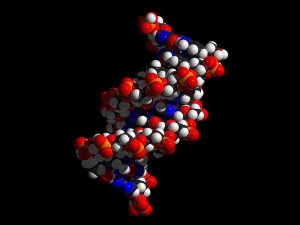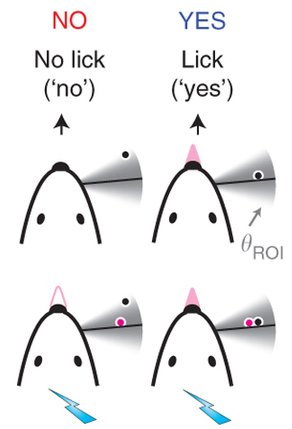 You’d be hard pushed nowadays to find anyone unaware of the “five-a-day” rule surrounding fruit and vegetables in our diets. Green vegetables, in particular, are associated with numerous health benefits, such as reduced risk of coronary heart disease.1 Yet consuming enough of these foods on a daily basis can be hard, especially if you find greens like Brussels sprouts unpleasantly bitter. But why do some of us find these vegetables less palatable? And can anything help make sprouts more appetising? Scientists in the fields of genetics and food science (or bromatology) are working to find the answers.
You’d be hard pushed nowadays to find anyone unaware of the “five-a-day” rule surrounding fruit and vegetables in our diets. Green vegetables, in particular, are associated with numerous health benefits, such as reduced risk of coronary heart disease.1 Yet consuming enough of these foods on a daily basis can be hard, especially if you find greens like Brussels sprouts unpleasantly bitter. But why do some of us find these vegetables less palatable? And can anything help make sprouts more appetising? Scientists in the fields of genetics and food science (or bromatology) are working to find the answers.
We all carry a unique set of instructions within our genes, defining who and what we are. Our genes encode the protein building blocks that form our bodies, including protein receptors (or sensors) within our taste buds. These receptors interact with food passing through our mouths telling us how bitter, salty, sweet, sour or umami it tastes. A special group of genetically determined receptors, known as the TAS2R group, detect bitter tastes, meaning that our genes play a key role in determining how bitter our food tastes.
The genetics behind bitterness is complex, but scientists have established a common test to explain why some people experience certain foods as being more bitter than others. This test involves the TAS2R38 bitter taste receptors and two substances they detect, phenylthiocarbamine (PTC) and 6-n-propylthiouracil (PROP). In general, the functionality of a person’s TAS2R38 receptors determines to what degree they taste PTC or PROP as bitter, with people being divided into three groups: non-tasters with non-functional TAS2R38 receptors (PTC and PROP do not taste bitter), medium tasters (PTC and PROP taste slightly bitter) and “super tasters” (PTC and PROP taste very bitter).2,3 But what does this have to do with green vegetables?
 In 2006, a lab group from Yale and Connecticut Universities set out to investigate PROP as a marker for bitterness in green vegetables (Brussels sprouts, kale and asparagus) and whether this related to peoples’ intake and preference. 110 individuals were asked to rate these vegetables, along with PROP, for bitterness and likability whilst also being asked to complete a questionnaire regarding their daily diet.
In 2006, a lab group from Yale and Connecticut Universities set out to investigate PROP as a marker for bitterness in green vegetables (Brussels sprouts, kale and asparagus) and whether this related to peoples’ intake and preference. 110 individuals were asked to rate these vegetables, along with PROP, for bitterness and likability whilst also being asked to complete a questionnaire regarding their daily diet.
Interestingly, the results showed that people who tasted PROP as most bitter (i.e. super tasters) also found the green vegetables very bitter, inferring PROP could be a marker of bitterness for this food group as well and suggesting TAS2R38 receptors may be involved in green vegetables’ bitterness.2 These people also tended to dislike greens more and eat less of them, suggesting a strong (and logical) relationship between a food’s bitterness and a lack of it in one’s diet. Thus, it seems for super tasters our genetic predisposition to produce functional TAS2R38 receptors may be working against us getting our five a day; making us find green vegetables bitter and unpalatable.
But all is not lost! Food scientists are now working on a solution to the super taster’s quandary. Mastaneh Sharafi and colleagues from the Allied Health Sciences Department at Connecticut University recently investigated the use of additives (aspartame, sodium chloride and sodium acetate) in a pilot study aimed at reducing or ‘masking’ green vegetables’ bitterness. Sharafi began by grouping 37 participants into non-, medium and super taster groups using PROP. They were then asked to rate plain and bitter green vegetables (asparagus, Brussel sprouts and kale), served together with one of the above masking agents, for likability.
To the researchers surprise, it seemed the masking agent’s effectiveness differed depending on both the vegetable and whether participants were non-, medium or super tasters. For super tasters, for instance, the two salt solutions reduced bitterness in asparagus but not sprouts or kale. Aspartame decreased bitterness across all the vegetables for super and medium tasters but had no effect for non-tasters. Participants with a significant dislike of greens and subsequent lack of these in their diets, reported improved likability with aspartame, suggesting masking agents could be useful to increasing green vegetable intake in disinclined individuals.3
So, it appears green veg haters can take some comfort in knowing that their dislike of sprouts is more likely due to their genetics than a desire to be difficult at dinnertime. And that masking these unpleasantly bitter tastes may hold the key to a palatable and balanced diet. Shafari’s small, yet noteworthy experiment certainly shows good prospects for aspartame and salt-based masking additives, but further work is still needed before us super tasters can comfortably achieve our “five-a-day”.
Post by: Megan Barrett
Megan is currently working as an associate writer at a medical communication company. You can follow her on Twitter @Meg_an12.
- Drewnowski A, Gomez-Carneros C. 2000. Bitter taste, phytonutrients, and the consumer: a review. Am J Clin Nutr. 72(6): 1424-35. http://www.ncbi.nlm.nih.gov/pubmed/11101467
- Dinehart M, Hayes J, Bartoshuk L, et al. 2006. Bitter taste markers explain variability in vegetable sweetness, bitterness, and intake. Physiol Behav. 87(2): 304-13. http://www.ncbi.nlm.nih.gov/pubmed/16368118
- Sharafi M, Hayes J, Duffy V. 2013. Masking vegetable bitterness to improve palatability depends on vegetable type and taste phenotype. Chem. Percept. 6:8-19. http://link.springer.com/10.1007/s12078-012-9137-5








